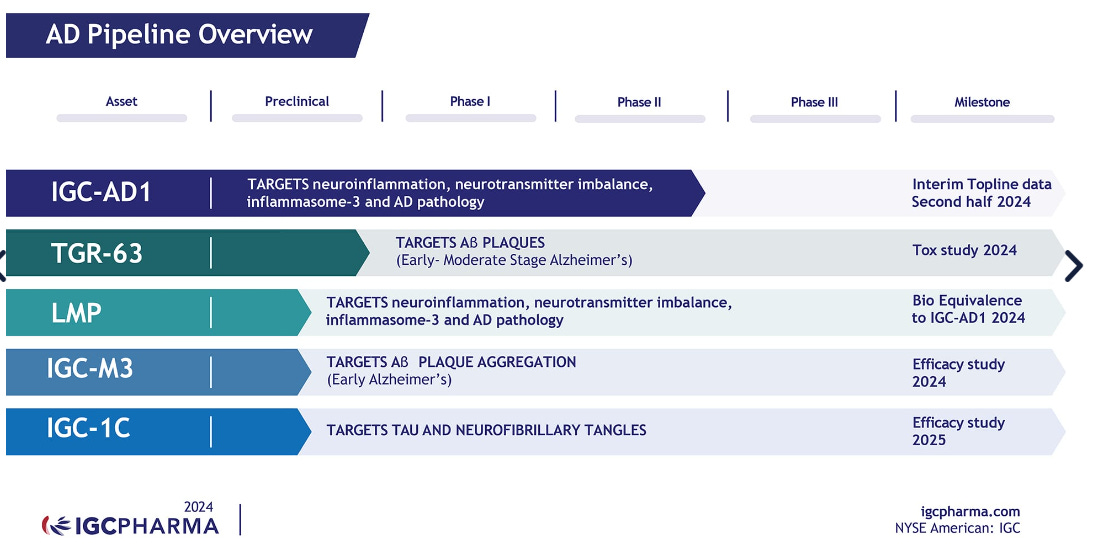20 Years Of Medical Fraud -- Are These Stocks A Giant Short?
They photoshopped everything.
Hurricane Milton has worked its way over the Florida peninsula, dropping wind and rain across the state.
The storm was one of the strongest, well formed hurricanes we have seen since Hurricane Michael from 2018. A natural beauty.
The uniqueness of the storm origin, track, and intensity led to a ton of conspiracy theories.
Maybe the storm was man-made, or amplified using military technology.
Maybe someone directed the storm to hit Tampa to influence the U.S. elections. Maybe there was something nefarious going on.
20 years ago, you could have roundly mocked these kinds of claims.
Now, it’s all fair game.
Because every single professional establishment lost all credibility in 2020.
Every. Single. One.
“What Radicalized You?”
The institutional collapse in 2020 was so quick and dense that it was hard to keep track.
The big story was COVID. Elements of the United States Government funneled money into China to do illegal bioweapons research, and the lab leaked the virus. Fauci, Collins, and Baric started a cover up.
Everything else was downstream of that.
The American Association of Pediatrics deleted pages off their website showing that masks don’t work on kids. They claimed they were “migrating” the website.
Corporate Media screamed at us for going outside and killing grandma, unless it was to act as shock troops for the Democrat Party during the Riots of St. Floyd.
The Department of Defense mandated a vaccine that wasn’t effective, where we had other options, and was harmful to young fit people.
I don’t expect any kind of reconciliation from the rolling crisis that was 2020. Maybe some Congressional hearings, but the things that I want to happen aren’t going to be palatable for most people.
Yet there’s one Establishment Scandal that can’t be swept under the rug. Billions of dollars are at stake, and there’s at least three publicly traded companies that are whistling past the graveyard.
The Criminal Conspiracy In Alzheimer’s Research
In 2006, Sylvain Lesné of the University of Minnesota published a paper in Nature that argued for the Beta Amyloid Hypothesis in Alzheimer’s research.
He claimed that the amyloid protein Aβ*56 was a clear marker of Alzheimer’s risk.
There’s one problem— he’s full of shit.
Not a little bit of shit. Completely full up to the brim.
He photoshopped his results. He digitally altered the images in his papers to get the results he wanted.
It’s a big problem! This paper has been cited over 2,000 times and is viewed as foundational Alzheimer’s research.
The author of this paper then received several NIH grants and helped direct research down a path that simply doesn’t have legs.
From 2006! It’s been nearly 20 years!
It gets worse! There’s an entire thread from Chris Said, but here are the highlights:
Marc Tessier-Lavigne, when working at Genentech, published an Alzheimer’s paper in Nature. He altered images in his research. This asshole was the President of Stanford until his resignation.
Berislav Zlokovic is over at the University of Southern California. He photoshopped results, and his entire lab is now under suspicion.
Hoau-Yan Wang is a researcher over at CUNY was indicted by the Feds for fraud.
(More on that name in a moment.)
If this news came out in 2018, it would have been a massive scandal. But because the 2020s have been a giant rolling crisis, it’s been ignored.
And since the narrative has been ignored, it hasn’t been properly priced into the markets.
How Do These Biotech Stocks Still Have Value?
Cassava Sciences (SAVA) is a biotech firm that’s developing a few Alzheimer drugs. It’s not a name I’ve traded but every once in a while it hits my scans due to hard pushes higher.
Their flagship drug is Simufilam, targeting a different protein inside the brain to reduce Alzheimer’s symptoms.
Here’s a slide from their corporate presentation:
The company expects to report FDA Phase 3 results very soon. The problem is, the entire premise behind their drugs could be built on a house of cards.
(Because we are dealing with financial speculation, I will now use words like “could” and “might” for legal reasons.)
We have evidence that multiple major Alzheimer’s research players have been lying to us for 20 years to try and curve fit their model, so their labs can stay funded.
How can we believe that the drugs coming out of any Alzheimer’s biotech can be valid?
Especially when the co-developer of Cassava’s drug is Hoau-Yan Wang, who is now indicted for fraud?
I’ve not done a deep dive into SAVA, so I could be wrong as to how the drug is going to do, and the FDA trials could put out solid data. But on first pass, this has more red flags than Beijing.
I don’t want to pick exclusively on SAVA. Here’s a slide from IGC Pharma:
If TGR-63 targets AB Particles, and we know that the foundational research on AB is bad, then of what use is the drug?
I’m not making a recommendation to short these names. You have to be an exceptional market operator to be shorting stocks to begin with, much less the volatile biotech sector.
Yet if you are an investor in a biotech company focused on Neurodegenerative diseases, you should get on the phone right now with their IR department and ask some very difficult questions.
We have wasted too much time and capital chasing rabbit trails that were faked by men who wanted accolades and NIH budgets. It’s time to excise every person who has been involved in the fraud and start from better principles.
There Are Better Treatment Options
The institutional shakeup in Alzheimer’s research is still in its nascent stage. At some point this news will reach escape velocity and hit the evening news. Public companies will be delisted and their research shuttered.
Good. They suck. The people I’ve mentioned above probably need to spend some time alone in a cell.
On the other side of this crisis we have innovations that could change how we view and treat Alzheimer’s and other neurodegenerative diseases.
You can get clarity in this space by knowing a few pieces of data…
Did you know that caretakers of Alzheimer’s patients have a much higher risk of contracting Alzheimer’s?
Did you know that dentists who treat Alzheimer’s patients have their risk increase?
Did you know that gingivitis is strongly linked to Alzheimer’s? (Floss your teeth!)
Did you know that neurosurgery could spread Alzheimer’s?
Boy, it sounds like this disease is transmissible, isn’t that weird?
It turns out that neurodegenerative diseases could be caused by a pathogen.
Because the shingles vaccine is preventing dementia cases. And that Herpes Simplex 1 is a risk factor for Alzheimer’s.
It’s possible that the proteins all these researchers were focused on are a result, not the cause of these neurodegenerative diseases. It’s why they had to curve fit their findings to the point of fraud, because they’re trying to reduce the disease’s waste products instead of the disease itself.
There’s also the neuroinflammation angle, which to me links it to metabolic disorders. There’s also a link with the brain’s ability to use insulin, which is why Alzheimer’s is sometimes viewed as a “diabetes” problem.
My guess is they’re all linked. Viral loads kickstart the disease, and the inflammation in the brain makes it difficult to metabolize various compounds, including prions and proteins.
A 10x Company Is Coming, Soon
Very soon, there will be an publicly traded company that will attack Alzheimer’s from a non-fraudulent angle. The company may already exist, I’m not sure.
I do believe that better treatments will come quickly. Medical AI can accelerate research, and other hypotheses can be quickly validated.
Or We Find A “Free” Solution
There is one treatment that I think could be very interesting. It’s cheap, has a clean safety profile, and virtually zero sides.
When a diabetic injects insulin, it’s so that it enters their bloodstream to take care of all the sugar that’s floating around in the bloodstream.
What if you could do something similar, but with just the brain?
There are blood vessels in your mouth and nose that completely bypass the normal metabolic systems and go straight to the brain. It’s why lines of coke are so fast-acting.
This is where intranasal insulin comes into play. You can snort insulin and have it go straight to your brain, so you don’t have to consider what your blood sugar is. The direct transport of insulin to the brain helps your brain’s metabolism, which then treats Alzheimer’s.
There’s some initial research down this line, and I think it could work very well.
I’m not sure it’s commercially viable. You can go buy some insulin OTC at Wal-Mart and get a nasal sprayer, and for under 30 bucks you have a very effective drug with no downsides.
Instead of a startup biotech revolutionizing Alzheimer’s treatment, it could be similar to how GLP-1 drugs like Ozempic developed— it’s a cheap peptide that’s been around for a while that fixes a lot of problems without much downside.
As for the stocks I’ve mentioned— if you’ve never tried to get short or bearish on a biotech stock with active FDA events around the corner… don’t. Just don’t touch it.
But if you want to really confuse the Wal-Mart pharmacist, go ask for a vial of Novolin R and a nasal spray bottle.







